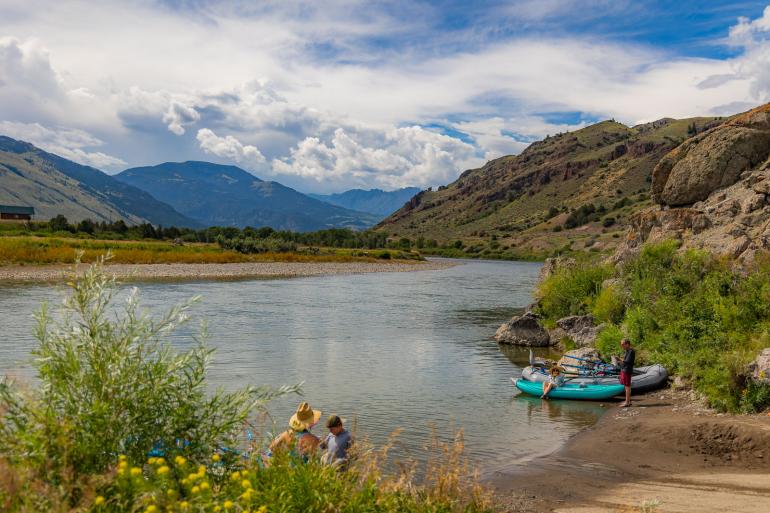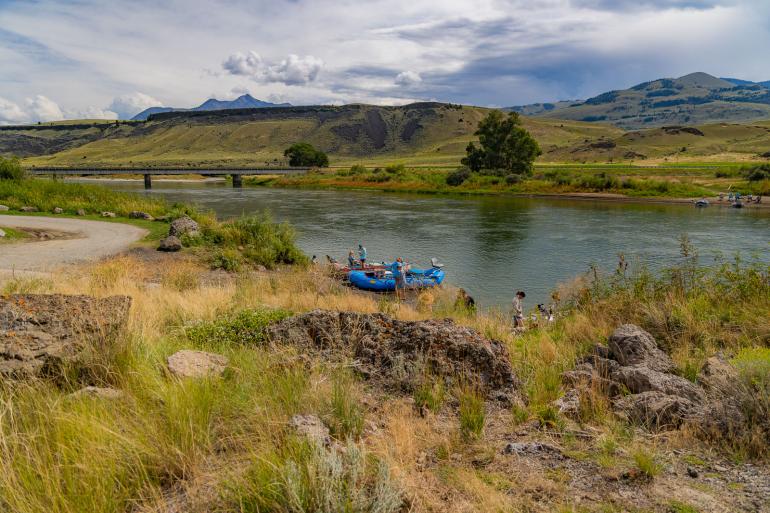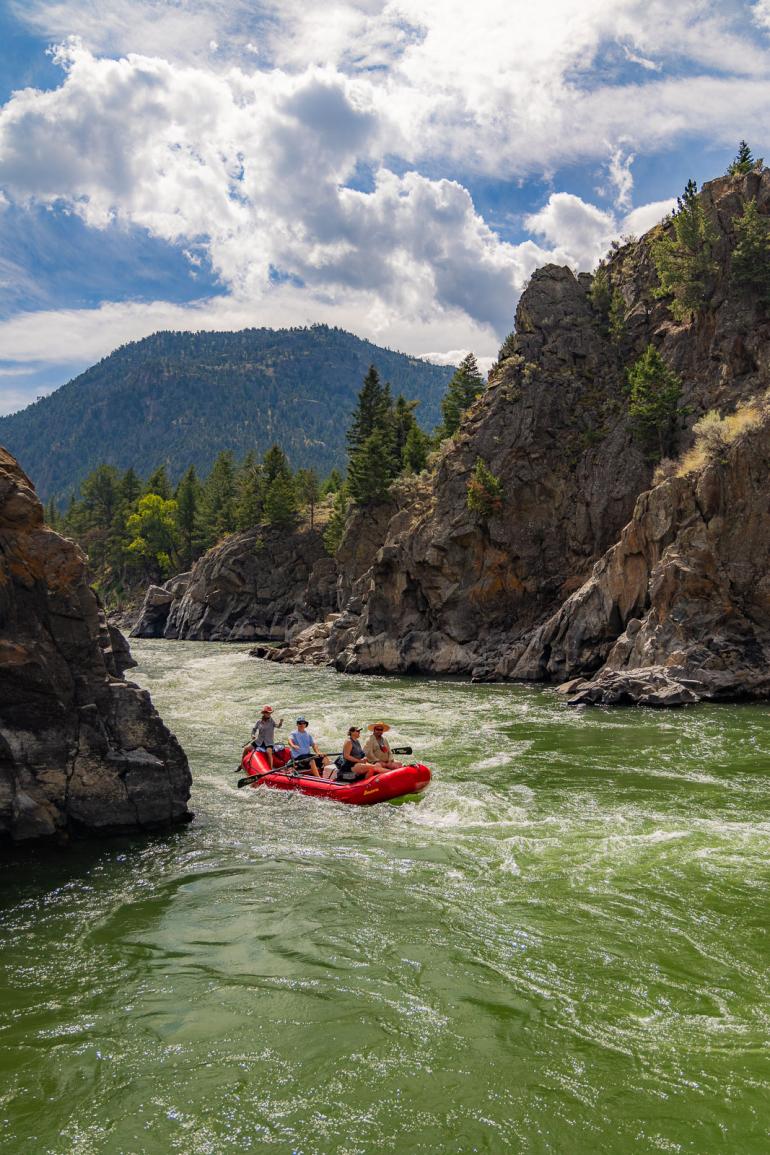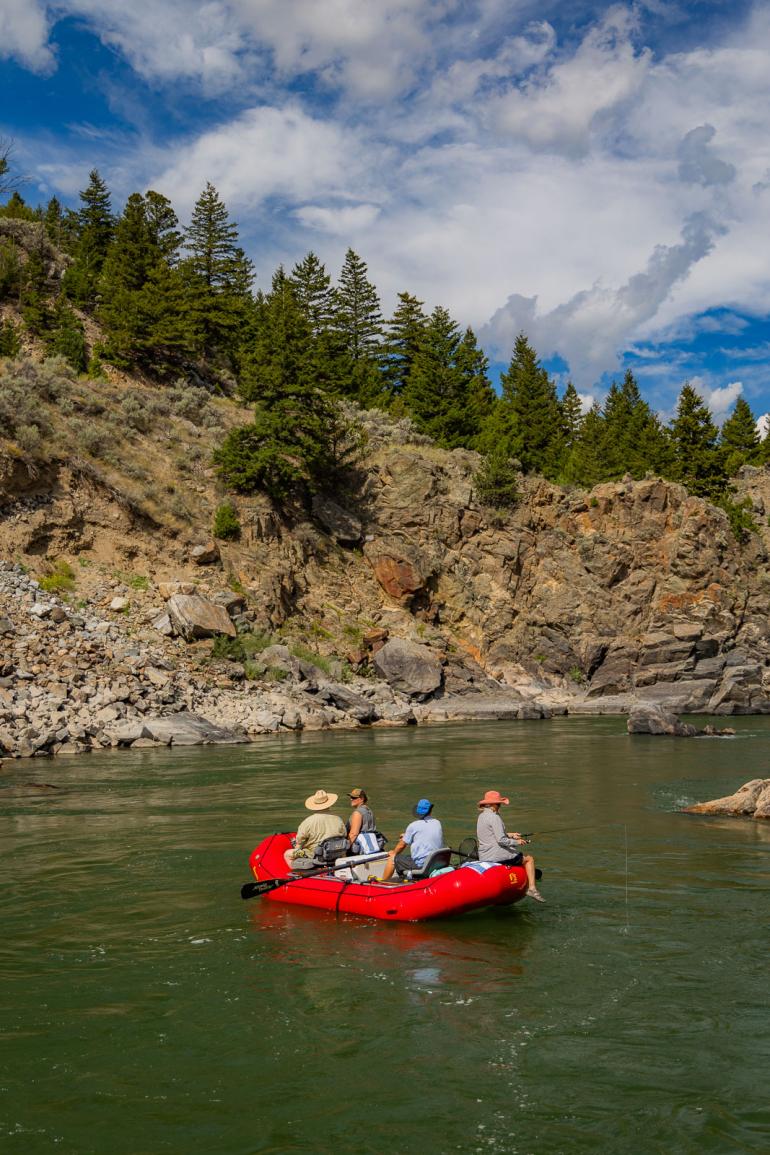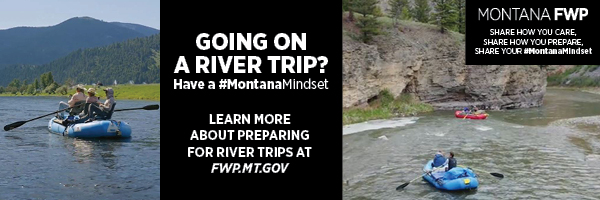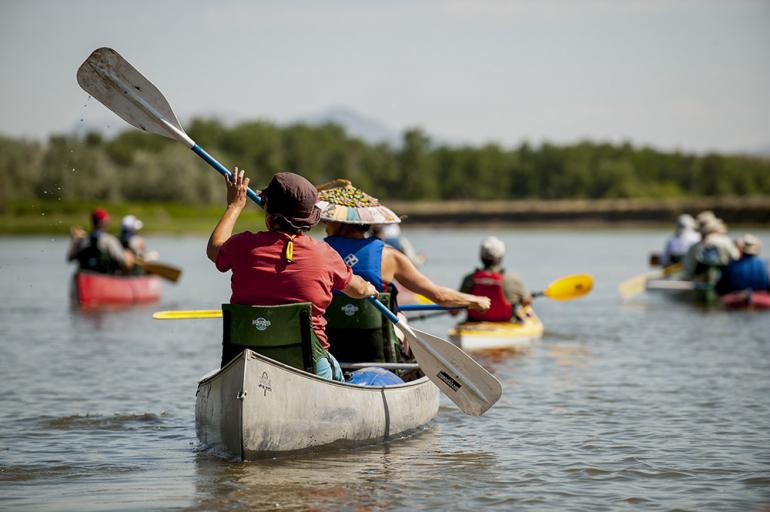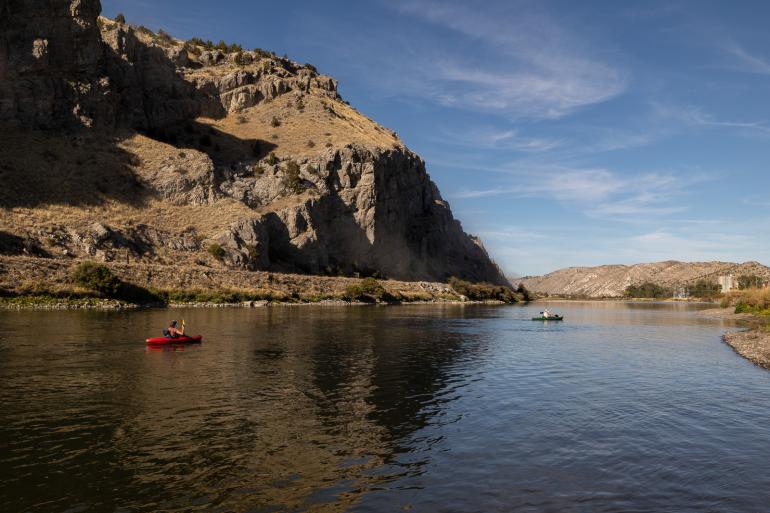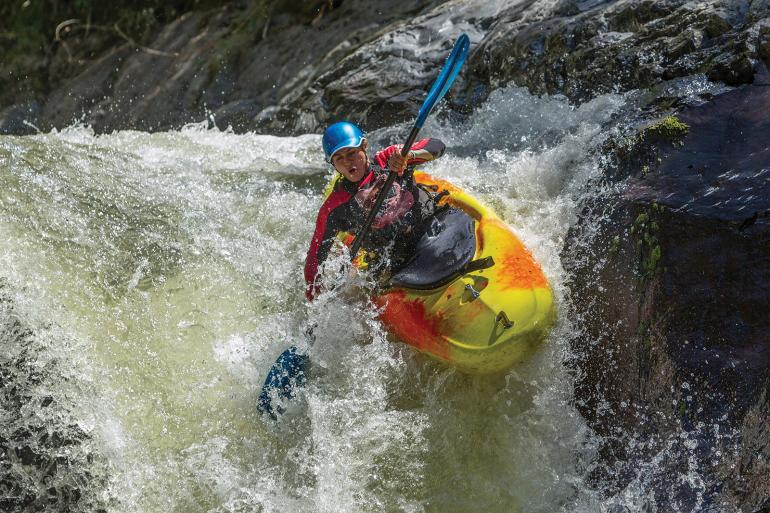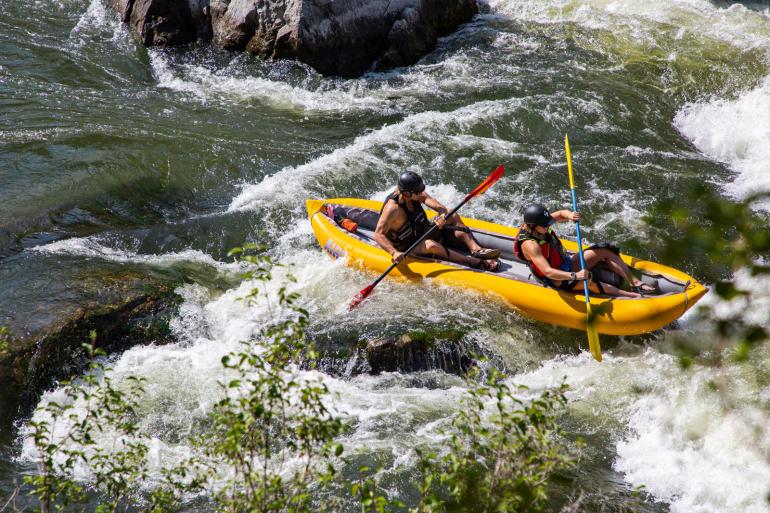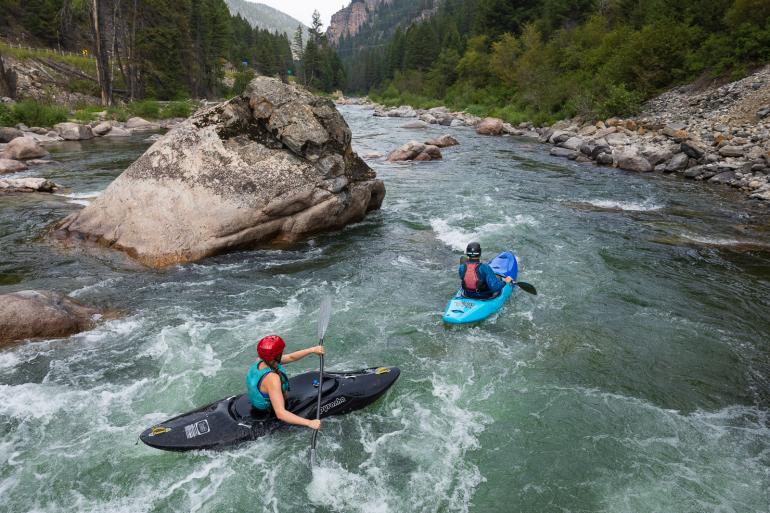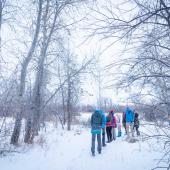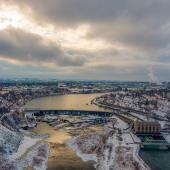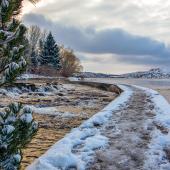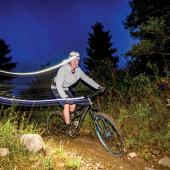On the Water Front
Proper planning for river recreation.
Montana is home to some of the most diverse and renowned rivers on Earth. Rivers and streams write the story of Montana. From the badlands of the Missouri Breaks, to the towering cliffs of the Smith, to the forested banks and mountainous backdrop of the Blackfoot, and crystal-clear waters of the Flathead—Montana's rivers are rich with biodiversity, sanctuaries for wildlife, and opportunities for recreation. A storied history of native culture, prospectors, and explorers has evolved to legendary fly fishing, floating, adventure, and excitement.
Serene flat water, incredible trout streams, deep canyons, and raging whitewater attract visitors from across the world to Montana. Lifelong memories are made here. Camaraderie with friends, the thrill of adventure, and spectacular scenery rejuvenate the soul.
Your actions to preserve Montana's majestic rivers will be rewarded with an unforgettable experience in the Last Best Place. As you prepare for your journey, follow these tips to help ensure a safe and memorable trip.
Know the Regulations: There's a river for every adventurer in Montana. Before you hit the water, it's important to plan ahead to ensure you understand the rules and regulations of the river you plan to float. Rules vary for different aspects of river recreation—including fishing, camping, and motorized use. Permits and licenses may be required by agencies such as MT FWP, BLM, NPS, USFS, and tribal authorities.
Permits & Licensing: Your permits and licenses should be carried with you while on the river. Download electronic versions to your phone head of time, as cell coverage can be unpredictable. Proceeds from these licenses support fish, wildlife, and natural resource conservation, as well as maintenance of recreation sites and preservation of the public experience.
Boat Inspection: Anyone transporting a watercraft through the state must stop at a designated inspection station to ensure that the watercraft is clean, drained, and dry. If the watercraft is found to be fouled with plants, animals, mud, or standing water, it must be decontaminated before launching into any waterway within the state.
Guided Trips: Outfitters and guides can help you plan your river adventure, and may be a good option for those wanting to experience Montana's rivers, but may not have the skills, equipment, or desire to embark on a trip alone.
Water Safety: You'll find everything from challenging whitewater to calm flat water on Montana's rivers. Consider the type of water you'll be navigating on your trip. By choosing the best fit for your skill level, you will help to ensure a safe and enjoyable experience.
Understanding Water Levels: Fluctuating water levels can have a significant impact on your trip. The peak of spring runoff brings fast currents and high water. Later in summer, levels drop, but hidden rocks and obstacles can emerge. Be sure to check a USGS flow gauge on the river you plan to float, in order to understand the current flow levels.
Reading the Water for Safety Hazards: Be mindful of hazards that exist year-round, such as diversion dams for irrigation or fallen trees. Get out and scout any areas that appear to be blocked or pose a danger to safe passage.
Research Tips: Safety is key for a rewarding and memorable trip on one of Montana's breathtaking waterways. Make plans that align with your skill level, and understand the hazards and how to navigate them safely. If unsure, reach out to locals or others who have experience floating the river that you're interested in. Researching river routes and studying maps will help you determine a travel distance that's right for your group, and the current river flows and conditions. Consider your group's experience level, the time you have available, and any potential challenges you may encounter along the route.
Lifejacket Tips: Personal Flotation Devices (PFDs) are required for every passenger. It is recommended that it be worn at all times while on the river. Children under 12 years of age must wear a lifejacket at all times while floating.
First-Aid Tools & Tips: It's important to have a well-stoked first-aid kit and knowledge of basic first aid in case of emergencies on the river. Additional safety tools that will help you handle unexpected situations include boat repair tools, whistle, map, knife, satellite communication device, and throw ropes. Make sure everyone in your group knows the location of—and how to use—the safety equipment on your watercraft.
Tips on Recreating Outdoors: Montana's rivers offer plenty of opportunities for hiking, fishing, and other activities—so be sure to plan ample time to explore the riverscapes around you. Choose a watercraft that's appropriate for your skill level and the conditions of the river. From kayaks and canoes, to rafts and driftboats, there are many options. Understanding how to maneuver different watercraft is essential for a gratifying trip. Take the time to learn about your craft and practice your skills before hitting the water.
Preparing for the Weather: Weather conditions in Montana can vary wildly, and are unpredictable. The cool morning air can turn to scorching heat, and a warm summer day can quickly yield to a dangerous storm. Snow is possible year-round, especially in early spring or late fall. Come prepared with good rain gear, warm clothes, sunscreen, and appropriate attire for a variety of conditions. Hypothermia is one of the most common injuries incurred from recreating on the river. In the spring and early summer, ambient temperatures may be warm, but water temperatures can still be very cold. Make sure you have the extra gear you need in case you are submerged in the water.
By taking necessary precautions, and equipping yourself with the right tools and knowledge, you can have a thrilling and safe adventure on one of Montana's beautiful rivers. As you plan your journey, remember that you are a guest in this incredible natural world. Follow these tips for an unforgettable experience that builds a deep personal connection with Montana's rugged landscape. Recreate with humility and respect. The thrill of discovery you experience, and the feeling that you're the first person to explore these pristine rivers, is thanks to visitors before you who minimized their impacts. You, too, can leave that same feeling for the next adventurer.

